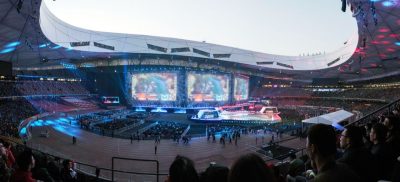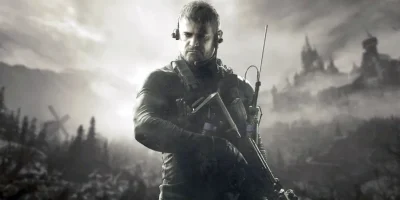Video games have long captured the imaginations of millions, offering interactive experiences that span diverse genres and narratives. As the gaming industry continues to grow and evolve, so too has the desire to adapt these beloved games into films. The journey of films based on video games is a fascinating one, filled with triumphs, failures, and lessons learned. This article explores the history, evolution, and impact of video game adaptations in cinema, delving into why these films captivate audiences and what the future holds for this dynamic intersection of media.
A Brief History: The Early Days of Video Game Films
The First Wave: 1990s Beginnings
The late 20th century marked the first wave of video game adaptations, with filmmakers eager to translate the burgeoning popularity of games into box-office success. The journey began with the release of “Super Mario Bros.” in 1993, a film based on Nintendo’s iconic game franchise. While the movie failed to capture the charm of its source material, it laid the groundwork for future adaptations.
Following “Super Mario Bros.,” the mid-1990s saw the release of “Street Fighter” (1994) and “Mortal Kombat” (1995), both based on popular fighting games. “Mortal Kombat,” in particular, achieved moderate success, praised for its martial arts choreography and commitment to the game’s lore. It was one of the first films to demonstrate that video game adaptations could capture the spirit of their source material and appeal to fans.
Key Films of the Early Days:
- “Super Mario Bros.” (1993): Despite its poor reception, this film marked the beginning of video game adaptations in cinema.
- “Street Fighter” (1994): Starring Jean-Claude Van Damme, this film was criticized for its campy style but gained a cult following over time.
- “Mortal Kombat” (1995): Directed by Paul W.S. Anderson, the film was praised for its fight sequences and remains a nostalgic favorite among fans.
Lessons Learned: Challenges in Adaptation
The early attempts to bring video games to the big screen faced significant challenges. One of the primary issues was translating interactive experiences into a passive medium. Video games offer players agency, allowing them to influence outcomes and shape narratives. Films, on the other hand, present a fixed storyline, which often resulted in a loss of engagement for audiences expecting the same level of interactivity.
Additionally, early adaptations struggled with fidelity to their source material. Creative liberties were frequently taken, often altering key elements of the games to fit traditional film narratives. This led to mixed receptions from fans who felt that these changes detracted from the essence of their favorite games.
The Turn of the Millennium: A New Era of Adaptations
The Advent of CGI: Enhancing Visuals
The late 1990s and early 2000s saw significant advancements in computer-generated imagery (CGI), which opened new possibilities for video game adaptations. Films like “Lara Croft: Tomb Raider” (2001) and “Resident Evil” (2002) leveraged CGI to bring game worlds to life with unprecedented detail.
“Lara Croft: Tomb Raider,” starring Angelina Jolie, was a commercial success, grossing over $274 million worldwide. Jolie’s portrayal of the iconic adventurer Lara Croft resonated with fans, and the film’s action-packed sequences showcased the potential of CGI in replicating game mechanics.
Similarly, “Resident Evil,” directed by Paul W.S. Anderson, launched a franchise that expanded over several sequels. While the series deviated from the original game’s storyline, it successfully established a cinematic universe with its unique take on the horror genre.
Key Films of the New Era:
- “Lara Croft: Tomb Raider” (2001): This film demonstrated the power of star casting and CGI to capture the essence of a beloved game character.
- “Resident Evil” (2002): The film’s blend of horror and action set the tone for a long-running series, proving the viability of video game franchises in film.
The Quest for Narrative Depth
During this period, filmmakers began to focus on narrative depth and character development, aiming to create more cohesive stories that resonated with audiences beyond gamers. “Silent Hill” (2006) exemplified this approach by embracing its source material’s atmospheric horror and complex narrative. The film’s commitment to capturing the eerie ambiance of the game was praised, though it faced challenges in maintaining narrative coherence.
Another notable adaptation was “Prince of Persia: The Sands of Time” (2010), which sought to blend action, adventure, and fantasy. While it achieved some commercial success, it highlighted the ongoing struggle to balance fidelity to the game with broader audience appeal.
Challenges and Criticisms:
- Fidelity vs. Accessibility: Striking a balance between staying true to game lore and making films accessible to non-gamers remained a persistent challenge.
- Narrative Complexity: Translating complex game narratives into a concise film format often resulted in oversimplification or narrative gaps.
The Modern Era: Successes and Innovations
Breaking the Mold: Successful Adaptations
In recent years, video game adaptations have seen a resurgence, with filmmakers learning from past missteps to deliver films that both honor the source material and appeal to wider audiences. “Detective Pikachu” (2019) and “Sonic the Hedgehog” (2020) stand out as successful examples of this new approach.
“Detective Pikachu” embraced the whimsical world of Pokémon while introducing an original storyline that captivated both fans and newcomers. The film’s blend of live-action and CGI brought Pokémon to life in a way that delighted audiences, leading to both critical and commercial success.
“Sonic the Hedgehog,” despite initial design controversies, became a hit after redesign efforts aligned the character more closely with fan expectations. The film’s humor, action sequences, and nostalgic nods resonated with viewers, leading to a successful sequel.
Key Modern Successes:
- “Detective Pikachu” (2019): This film captured the essence of Pokémon through its imaginative world-building and engaging story.
- “Sonic the Hedgehog” (2020): A testament to the power of fan feedback, this film successfully merged nostalgia with modern storytelling.
Innovations and New Directions
The modern era of video game adaptations has been marked by innovation, with filmmakers exploring new storytelling techniques and creative collaborations. “The Witcher” (2019) on Netflix, though technically based on the books, was heavily influenced by the successful video game series. Its episodic format allowed for deeper character exploration and plot development, showcasing the potential of serialized adaptations.
Furthermore, films like “Monster Hunter” (2020) have experimented with blending game mechanics and cinematic storytelling. While not universally acclaimed, these films highlight the industry’s willingness to experiment with new approaches and expand the boundaries of traditional adaptations.
Innovative Approaches:
- Episodic Adaptations: The success of shows like “The Witcher” demonstrates the potential of serialized formats for complex game narratives.
- Creative Collaborations: Partnerships between game developers and filmmakers, such as the “Uncharted” movie, aim to capture the essence of beloved games while appealing to a broad audience.
The Future of Video Game Films
Embracing Diverse Genres
The future of video game adaptations looks promising, with studios increasingly embracing diverse genres and narratives. Films like “Cyberpunk 2077: Edgerunners” explore cyberpunk themes, while upcoming projects like “The Last of Us” HBO series aim to capture the emotional depth of their source material.
As technology continues to advance, filmmakers have the tools to create immersive worlds that mirror the gaming experience. The rise of virtual reality and interactive storytelling may further blur the lines between films and games, offering audiences new ways to engage with their favorite franchises.
Opportunities for Innovation
The gaming industry is rich with untapped stories and characters that hold immense potential for cinematic adaptation. The success of adaptations lies in capturing the essence of these stories while leveraging the strengths of both mediums. As filmmakers continue to refine their approach, we can expect to see adaptations that push the boundaries of storytelling and redefine what it means to bring games to life on the big screen.
Future Prospects and Innovations:
- Diverse Storytelling: Embracing a wide range of genres and narratives, from cyberpunk to horror, opens new avenues for adaptation.
- Technological Advancements: The rise of VR and interactive storytelling may redefine how audiences experience video game adaptations.
- Collaboration with Game Developers: Close partnerships between filmmakers and game creators can ensure authenticity and respect for source material.
Cultural Impact and Significance
Bridging the Gap Between Games and Film
Video game adaptations have played a crucial role in bridging the gap between gaming and cinema, allowing fans to experience their favorite worlds in new and exciting ways. These films often serve as gateways for non-gamers, introducing them to the rich narratives and characters that define the gaming industry.
Moreover, successful adaptations contribute to the broader acceptance of gaming as a legitimate form of art and storytelling. As more games are recognized for their narrative complexity and cultural significance, the line between games and traditional media continues to blur.
Fostering a Global Fanbase
Video game films have the unique ability to unite global audiences, bringing together fans from diverse backgrounds who share a common passion for gaming. The success of these adaptations demonstrates the universal appeal of gaming narratives and the power of storytelling to transcend cultural boundaries.
Cultural Influence:
- Legitimizing Gaming: Successful adaptations validate gaming as an art form, showcasing its narrative depth and creative potential.
- Global Fanbase: Video game films unite fans worldwide, highlighting the universal appeal of gaming narratives.
- Transmedia Storytelling: The success of adaptations encourages cross-media storytelling, allowing franchises to expand across various platforms.
Conclusion
The journey of films based on video games has been one of evolution, learning, and innovation. From the early attempts that struggled to capture the essence of games to the modern successes that celebrate and honor their source material, video game adaptations continue to captivate audiences and explore new creative frontiers.
As the gaming industry and film industry continue to intersect, we can look forward to a future where these adaptations push boundaries, redefine storytelling, and celebrate the diverse and imaginative worlds that video games have to offer. Whether through blockbuster films, episodic series, or interactive experiences, the future of video game adaptations promises to be as dynamic and captivating as the games themselves.
References
- The Evolution of Video Game Movies – Collider
- A Look at Video Game Adaptations in Cinema – IGN
- From Pixels to the Big Screen: The History of Video Game Movies – Variety
- Why Video Game Movies Keep Getting Better – The Verge
- The Future of Video Game Adaptations – GameSpot
These references provide a comprehensive overview of the history, evolution, and impact of video game adaptations in cinema, highlighting key successes, challenges, and innovations that have shaped this dynamic intersection of media.




